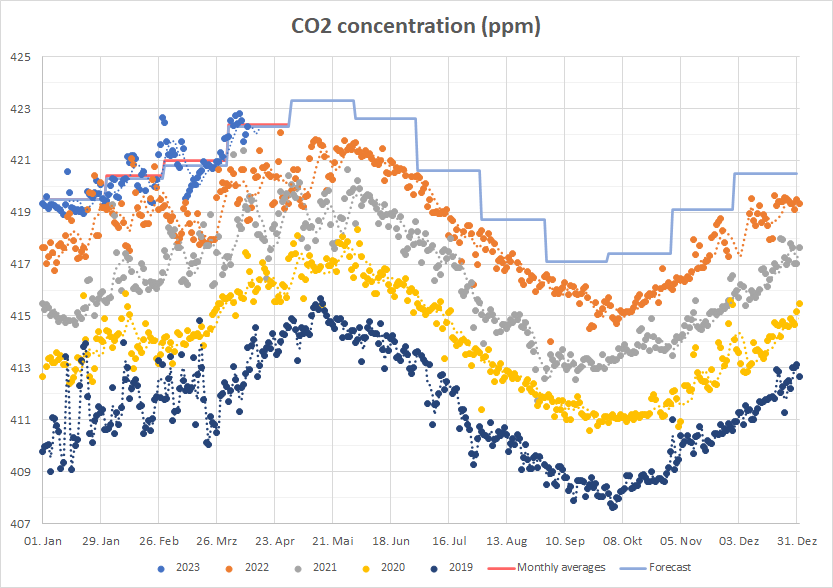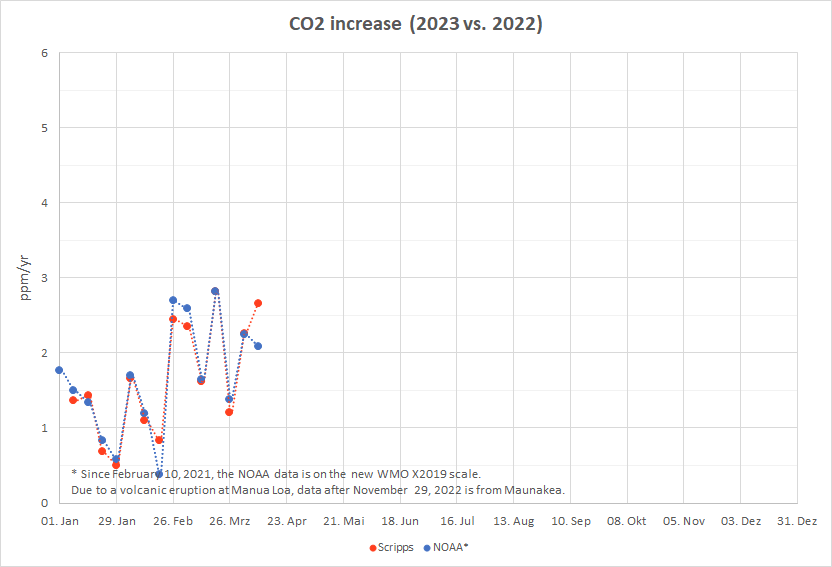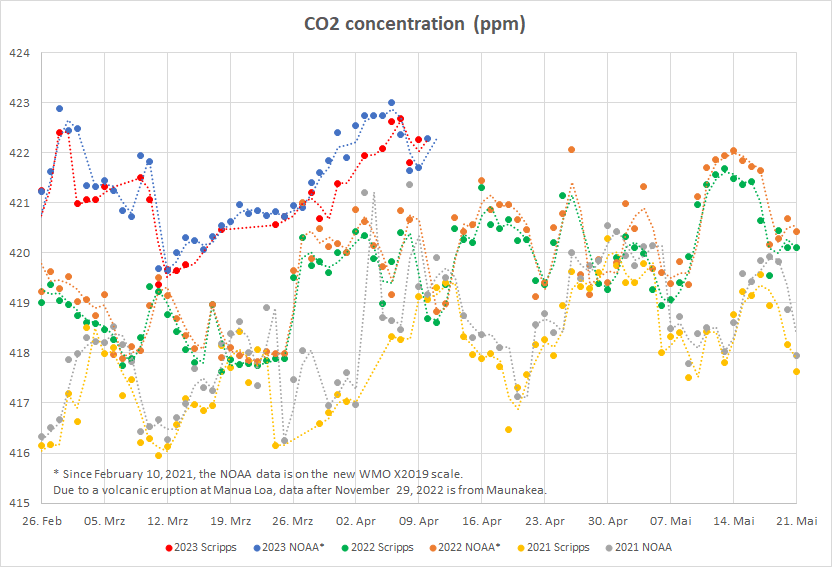NOAA dataScripps dataMet Office forecastFollowing their outage due to a volcanic eruption, measurements of CO
2 by NOAA have resumed in early December, and Scripps have followed suit in early March. I finally got around to reincorporate the Scripps data into my charts. Here's the data as of today.
January and February have followed the Met Office forecast very closely. March was slightly higher, by 0.2 ppm, but still well within the uncertainty. The first third of April has looked similar so far, above the forecast by around 0.1 ppm.
Met Office has predicted a year-to-year rise of 1.97 ppm for 2023. So far, we're at 1.64 ppm, but there's reason to believe that the monthly rise in April and May will be well above 2 ppm (see previous discussion about the anomalously low CO
2 values in March-May 2022).
Importantly though, the Met Office prediction relied on the expectation that 2023 will be a La Niña year, which we now know will not be the case. They predict a rise of 2.32 ppm if most of the year is at neutral SSTs. If an El Niño develops during the next few months then who knows where we'll land... The predicted yearly rise of 1.97 ppm would have been
the highest ever seen under La Niña conditions.



